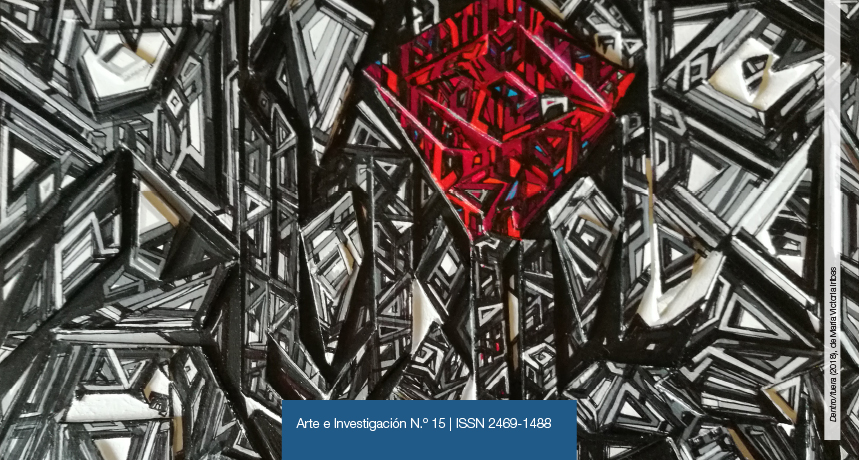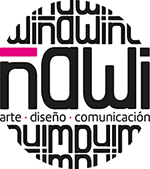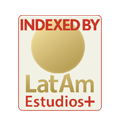Poetics as Critical Interpellation in Art
DOI:
https://doi.org/10.24215/24691488e020Keywords:
Political and critical art, poetic, interpellationAbstract
In this paper we explore the ways in which the political can be problematized from the poetics of art. A glimpse of the political in the images might bring us closer to artistic practices looking to call upon the spectator in order to generate new meaning, new ways to know and make visible. We will consider the cases of Codo a codo, by Rodrigo Etem, and Los sonidos de atrás, by Leticia Obeid, presented within the exposition Political Poetics which took place in Parque de la Memoria from December 2016 until March 2017, organized around the question «what does it mean today to make political art?».Downloads
References
AA.VV. (2016). ¿Qué significa hoy hacer arte político? Parque de la Memoria. Monumento a las Víctimas del Terrorismo de Estado. Recuperado de http://parquedelamemoria.org.ar/wpcontent/uploads/2017/01/CATALOGO-y-APORTES-Po%C3%A9ticas-Pol%C3%ADticas.pdf
Battiti, F. y Farina, F. (2016). Poéticas políticas. Recuperado de http://parquedelamemoria.org.ar/wp-content/uploads/2017/01/CATALOGO-y-APORTES-Po%C3%A9ticas-Pol%C3%ADticas.pdf
Etem, R. (2014). Codo a codo [Video]. Recuperado de https://vimeo.com/110484428
Gadamer, H. G. (1991). Verdad y método. Fundamentos de una hermenéutica filosófica. Salamanca, España: Sígueme.
Hartmann, H. (1980). Un matrimonio mal avenido: hacia una unión más progresiva entre marxismo y feminismo. Recuperado de http://www.fcampalans.cat/uploads/publicacions/pdf/88.pdf
López Anaya, J. (1 de agosto de 1992). El absurdo y la ficción en una notable muestra. La Nación. Recuperado de http://www.proa.org/esp/exhibition-algunos-artistas-90-hoy-textos.php#texto4
Labastida, A. (2014). Fuera de cuadro. En MUAC, Dobles (pp. 6-11). Recuperado de http://www.leticiaobeid.com/index.php?/ongoing/dobles/
Obeid, L. (2014). Escenas sonoras de una educación sentimental. En MUAC, Dobles (pp. 20-25). Recuperado de http://www.leticiaobeid.com/index.php?/ongoing/dobles/
Obeid, L. (s. f). Muestras: Dobles [Página web]. Recuperado de http://www.leticiaobeid.com
Obeid, L.(2014). Los sonidos de atrás [Video]. Recuperado de http://www.leticiaobeid.com/index.php?/ongoing/dobles/
Oliveras, E. (1994). 90-60-90. En Algunos Artistas/90–HOY. Recuperado de http://www.proa.org/esp/exhibition-algunos-artistas-90-hoy-textos.php#texto8
Pombo, M. (1995). Dos Cepitas [Objeto]. Recuperado de http://castagninomacro.org/page/obra/id/60/Pombo%2C-Marcelo/Dos-Cepitas
Richard, N. (2007). Fracturas de la memoria: Arte y pensamiento crítico. Buenos Aires,Argentina: Siglo Veintiuno.
Schor, M. (2001). Autoridad y aprendizaje. En K. Cordero e I. Saenz. (Comps.), Critica feminista en la teoría a historia del arte (pp. 131-140). Recuperado de https://sentipensaresfem.files.wordpress.com/2016/09/cordero_saenzcomps_critica_feminista_en_la_teoria_e_historia_del_arte2001.pdf
Downloads
Published
How to Cite
Issue
Section
License
The acceptance of the manuscript by the magazine means the non-exclusive cession of the property rights of the authors in favour of the editor, who allows the reuse, after publication (post print), under a license Attribution-NonCommercial-NoDerivatives 4.0 International. According to these terms, the material can be copied and redistributed by any means or in any format as long as a) the author and original source of the publication are quoted (magazine and URL of the work), access to the license is provided and whether changes have been made is mentioned; and b) the material is not used for commercial purposes.
The cession of non-exclusive rights means that after the publication (post print) in Arte e Investigación the authors can publish their work in any language, means and format; in such cases it must be mentioned that the material was originally published in this magazine. Such cession also means the authorization of the authors for the work to be collected by SEDICI, the institutional archive of the National University of La Plata, and to be spread in the databases that the editorial team considers appropriate to increase the visibility of the publication and its authors.
Moreover, the magazine encourages the authors to deposit their productions in other institutional and thematic archives under the principle that offering the society the scientific and academic production without any restrictions contributes to a greater exchange of the global knowledge.


































